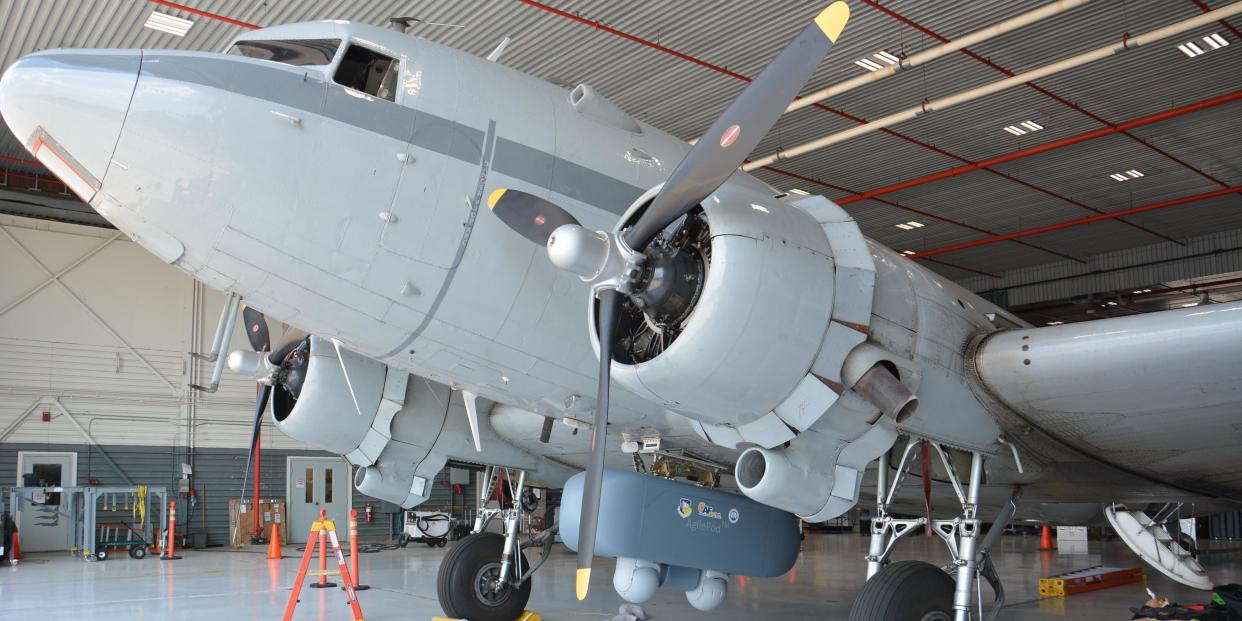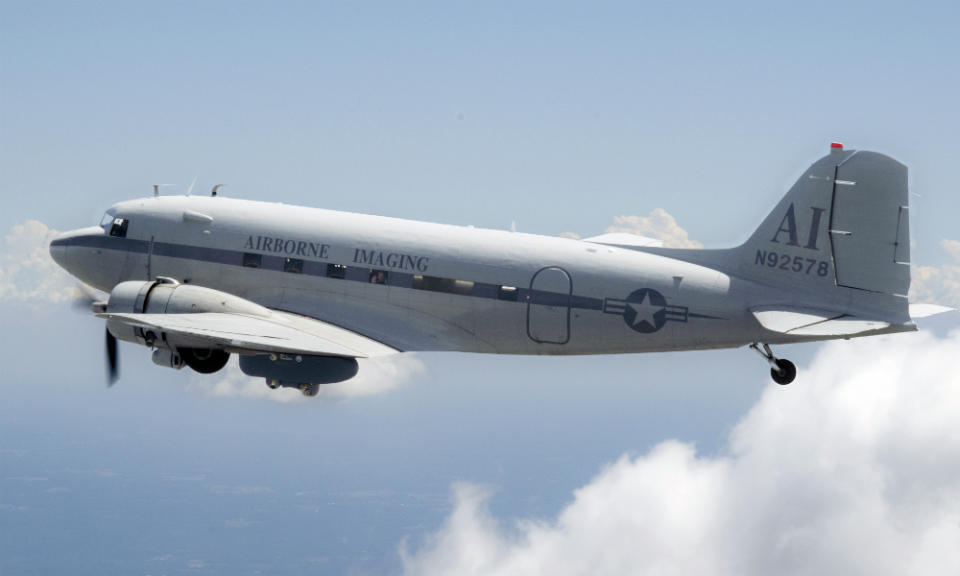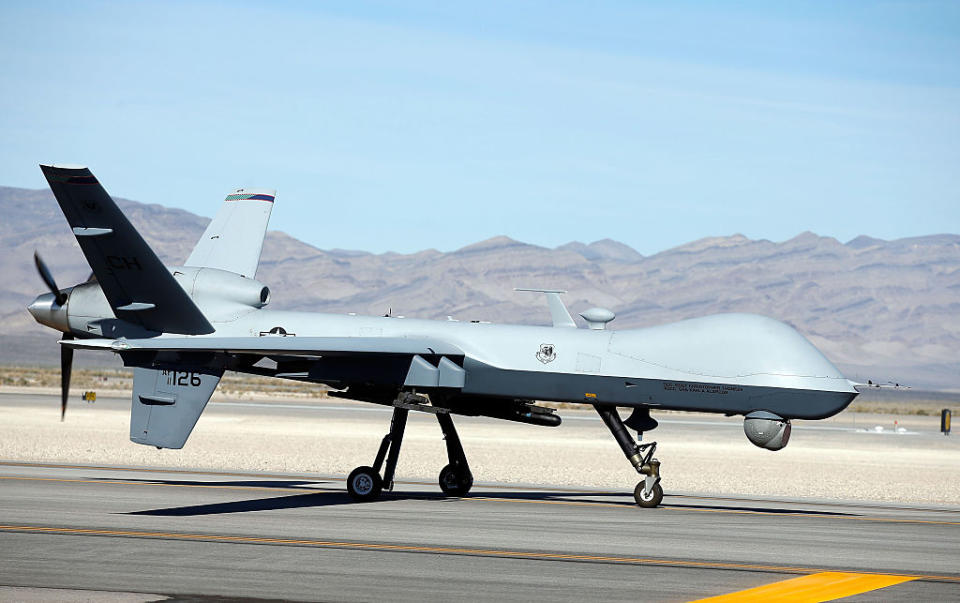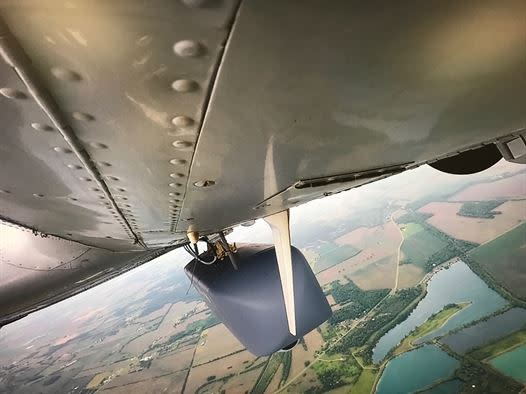A 1930s-Era Plane Is Making the Reaper Drone Even Deadlier. Here's How.

In 1944 Germany launched the V-1 "Buzzbomb" against England-the first practical use of what we now call armed drones. In the 73 years since, UAVs have evolved from surveillance tools to full-fledged battlefield weapons. By 2011, the U.S. Air Force was training more pilots for advanced UAVs than for any other weapons system, and there's been a steady stream of sensor testing to make drones better and better.
There's only one problem: How can you test sensors on an aircraft with no cockpit? Much like the military drone's own origins, the answer comes from World War II.

Affectionately called the "Gooney Bird", the DC-3 is a twin engined, propeller-driven Depression-Era transport that now helps improve the most lethal drone in the world-the MQ-R Reaper. The Reaper is a high-altitude turboprop UAV, with a 65 foot wingspan that can the can carry 3,000 pounds of munitions while staying aloft up to 14 hours. With stats like these, it's no wonder the Reaper became the Obama Administration's favorite strike tool.
To fire its collection of Hellfire missiles, Paveway II laser-guided bombs, and GBU-38 JDAM, the Reaper uses a variety of sensors carried in pods purpose built for different missions, whether providing close air support to protect Army special forces or targeting ISIS militants during an hours-long sortie over Raqqa, Syria. Each mission calls for a different pod, but the Air Force instead wants just one pod able to handle any mission.
Enter the AgilePod. A reconfigurable pod ranging from 28 to 60 inches, the Air Force Research Laboratory (AFRL) designed the AgilePod with common electro-mechanical connections and open-architecture software, transforming the addition of laser or other sensors to the Reaper's fuselage into a plug-and-play affair. Making sure that the sensors play well together inside AgilePod required flight test engineers working in real-time onboard an airplane that could carry the pod, the people, and their test instruments.

But the oddity of using an WWII airplane to improve next-generation UAVs isn't lost on USAF Captain Russell Shirey, program manager for Blue Guardian, which flight tested the AgilePod.
"I've had people asking, are we doing flight testing or a D-Day reenactment?"
Designed in 1934, the Douglas DC-3 revolutionized air transport as an airliner and airlifter. Over 16,000 DC-3s and military-variant C-47s were built with more than 300 still flying today. According to the Aircraft Owners and Pilots Association magazine, the DC-3 possesses among the best payload/efficiency numbers ever met in a commercial airplane design. Newer test aircraft often can't carry the same payload or use short/unprepared runways. They also usually burn too much fuel and are simply too costly, so that's why DC-3 pilots have long said, "the only replacement for a DC-3 is another DC-3." This particular C-47 was built in 1943 and is owned by Airborne Imaging, a sensor development firm.
"It's a true workhorse," Airborne business manager and pilot, Dave Wheeler, says. "The ability to carry custom sensor mounts is amazing. You can just cut holes in it."
The company adapted existing hardpoints on the DC-3's belly to carry an Air Force-standard BRU-15 weapons rack-the same rack used by the MQ-9-for mounting the AgilePod. In a succession of 14 test flights, engineers flew eight different sensors and five different pod configurations.
"I've had people asking, are we doing flight testing or a D-Day reenactment?"
With its two 1,350 horsepower engines set to cruise power, the DC-3 flies along at relatively low altitude at about 180 mph. It can stay aloft for up to eight hours, far longer than smaller, more modern airplanes. It also carries flight test engineers in relative comfort.
"In an airliner you feel the airplane [rotate] and lift off the runway," says University of Dayton Research Institute flight test engineer, Bryan Miller. "In the DC-3 you just feel a slight lift and the next thing you know, you're off the ground. It was louder than an airliner but not as noisy as I expected."
The DC-3's large, unpressurized cabin allows flight test engineers to mount extensive test racks in relative comfort. "We had engineers onboard who could literally change [software] code in-flight," Capt. Shirey adds. "That's a real benefit. Once we go to the MQ-9, we don't have that luxury."
Although the mission was improving the AgilePod, researches also relished the opportunity to fly in the belly of an aerial legend.

"It's not often that you get to fly in a WWII aircraft," Deputy Program Manager Juliana Nine says. "It was pretty sweet. I was telling all my friends, 'Guess what I flew on?"
"Seeing the DC-3 in the hangar for the first time was unique – it took you back in time," says Mark DiPadua of AFRL's Electronics and Sensors Branch. "It was a wonderful surrogate to mimic the flight conditions we'd find on the MQ-9."
Capt Shirey says that it's likely AFRL will use the vintage airplane for flight testing for other programs in the future.
With several weeks of fine-tuning on the the C-47, the AgilePod will be moved to a MQ-9 test drone next. It could be operational in two years and flying on unmanned and manned aircraft. In the meantime, Airborne's DC-3s aren't sitting idle. They've been used in recent Air Force Red Flag exercises, flying with F-22s and F-35s, and they continue to develop the UAV tech of tomorrow.
You Might Also Like

